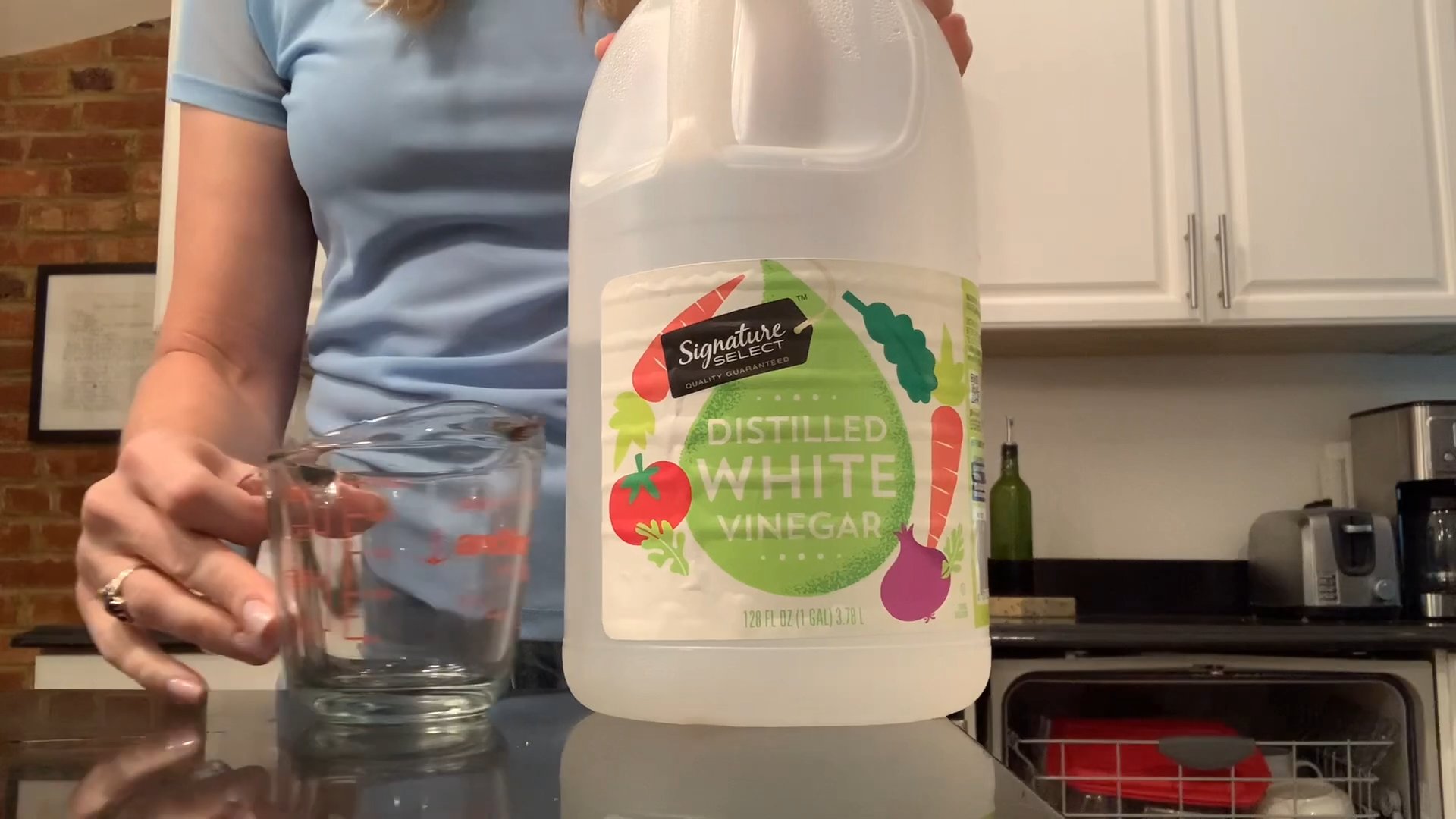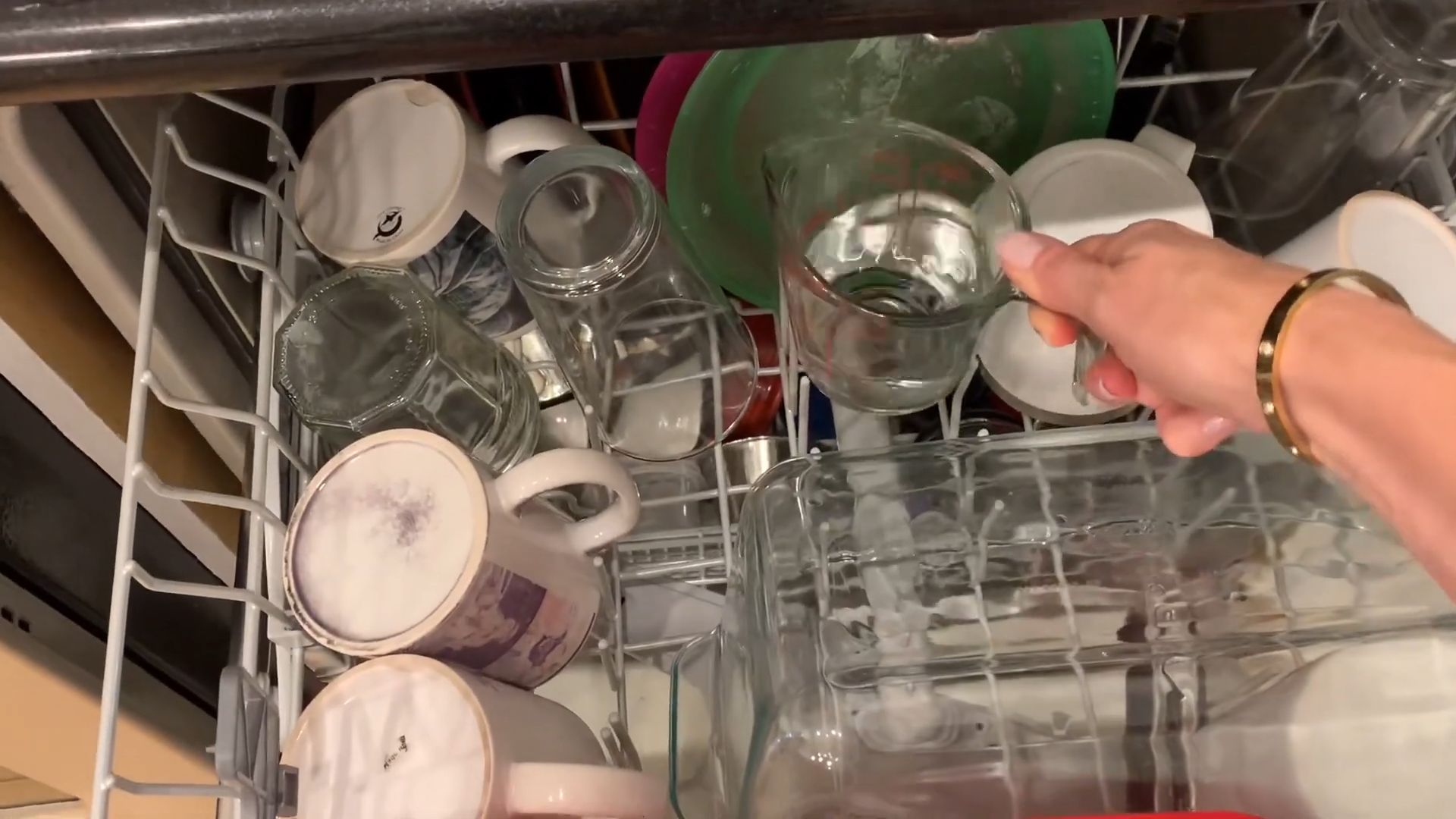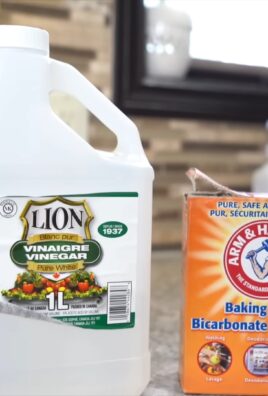White vinegar everyday uses are more numerous than you might think! I remember my grandmother always having a gallon jug tucked away under the sink, and as a kid, I never understood why. It wasn’t until I started my own home and garden that I truly appreciated the magic of this humble liquid. For generations, vinegar has been a staple in households worldwide, dating back to ancient civilizations who used it for everything from preserving food to medicinal purposes.
Are you tired of harsh chemicals and expensive cleaning products? Do you want to find natural, effective solutions for everyday problems around your home? Then you’re in the right place! This article is packed with amazing DIY tricks and hacks that harness the power of white vinegar. From banishing stubborn stains to revitalizing your garden, you’ll be amazed at the versatility of this inexpensive ingredient.
In today’s world, we’re all looking for ways to simplify our lives and reduce our reliance on harmful chemicals. That’s where white vinegar everyday uses really shine. It’s a safe, eco-friendly, and budget-friendly alternative to many commercial products. So, let’s dive in and discover the incredible potential of this pantry staple!

Unlocking the Magic of White Vinegar: A DIY Guide to Everyday Hacks
Hey there, fellow DIY enthusiasts! I’m so excited to share some of my favorite white vinegar hacks with you. This humble kitchen staple is a powerhouse of cleaning, deodorizing, and even beauty benefits. Get ready to be amazed by the versatility of this inexpensive and eco-friendly solution!
Cleaning Power Unleashed
White vinegar’s acidity makes it a fantastic natural cleaner. It cuts through grease, dissolves mineral deposits, and disinfects surfaces. Just remember to always test it in an inconspicuous area first, especially on delicate materials.
1. Sparkling Clean Windows and Mirrors
Tired of streaks on your windows and mirrors? White vinegar is your answer!
1. Gather your supplies: You’ll need a spray bottle, white vinegar, water, and a microfiber cloth.
2. Mix the solution: In the spray bottle, combine equal parts white vinegar and water. I usually go for a 1:1 ratio.
3. Spray and wipe: Lightly spray the solution onto the glass surface.
4. Wipe clean: Use a clean, dry microfiber cloth to wipe the surface in a circular motion. Buff until dry and streak-free. You’ll be amazed at the shine!
2. De-gunking Your Showerhead
Hard water can leave mineral deposits on your showerhead, reducing water pressure. Here’s how to fix it:
1. Gather your supplies: You’ll need a plastic bag (a sandwich bag works well), white vinegar, a rubber band, and an old toothbrush (optional).
2. Fill the bag: Pour enough white vinegar into the plastic bag to completely submerge the showerhead.
3. Secure the bag: Attach the bag to the showerhead using the rubber band, ensuring the showerhead is fully immersed in the vinegar.
4. Soak overnight: Let the showerhead soak in the vinegar overnight. This allows the vinegar to dissolve the mineral deposits.
5. Remove and scrub: Remove the bag and discard the vinegar. Use an old toothbrush to scrub away any remaining residue.
6. Rinse and enjoy: Rinse the showerhead thoroughly with water. Your showerhead should now be sparkling clean and have improved water pressure!
3. Reviving Your Washing Machine
Your washing machine needs a little TLC too! White vinegar can help remove detergent buildup and freshen it up.
1. Empty the machine: Make sure your washing machine is empty.
2. Add vinegar: Pour 2 cups of white vinegar into the detergent dispenser.
3. Run a hot cycle: Run a complete hot water cycle.
4. Repeat monthly: I recommend doing this once a month to keep your washing machine clean and fresh.
4. Cleaning Your Coffee Maker
Coffee makers can accumulate mineral deposits over time, affecting the taste of your coffee. Here’s how to descale it with white vinegar:
1. Prepare the solution: Fill the water reservoir with equal parts white vinegar and water.
2. Run a brewing cycle: Turn on the coffee maker and run a full brewing cycle.
3. Rinse with water: Discard the vinegar solution and fill the reservoir with fresh water. Run two or three more brewing cycles to rinse away any remaining vinegar.
4. Enjoy fresh coffee: Your coffee maker is now clean and ready to brew delicious coffee!
5. Disinfecting Kitchen Surfaces
White vinegar is a great natural disinfectant for kitchen countertops and cutting boards.
1. Prepare the solution: Use white vinegar straight from the bottle.
2. Spray and wipe: Spray the vinegar onto the surface and let it sit for a few minutes.
3. Wipe clean: Wipe the surface clean with a damp cloth.
4. Rinse (optional): You can rinse the surface with water if desired.
Deodorizing Like a Pro
White vinegar is also a fantastic deodorizer. It neutralizes odors instead of just masking them.
1. Freshening Up Your Fridge
A smelly fridge is no fun. Here’s how to banish those odors with white vinegar:
1. Remove food: Take out all the food from your refrigerator.
2. Wipe down surfaces: Wipe down all the shelves, drawers, and walls with a solution of equal parts white vinegar and water.
3. Vinegar bowl: Place a bowl of white vinegar in the fridge to absorb lingering odors. Leave it in there for a few hours or overnight.
4. Return food: Put the food back in the fridge. Your fridge should now smell much fresher!
2. Eliminating Pet Odors
Pet accidents happen. White vinegar can help eliminate those lingering odors.
1. Blot up the mess: Blot up as much of the mess as possible with paper towels.
2. Apply vinegar: Saturate the affected area with white vinegar.
3. Let it sit: Let the vinegar sit for several minutes to neutralize the odor.
4. Blot dry: Blot up the vinegar with clean paper towels.
5. Air dry: Allow the area to air dry completely. The vinegar smell will dissipate as it dries, taking the pet odor with it.
3. Refreshing Musty Towels
Towels can sometimes develop a musty smell, even after washing. White vinegar can help!
1. Wash with vinegar: Add 1 cup of white vinegar to your washing machine along with your regular detergent.
2. Wash as usual: Wash the towels as usual.
3. Dry thoroughly: Make sure the towels are completely dry before storing them.
4. Garbage Disposal Refresh
A stinky garbage disposal can make your whole kitchen smell bad. Here’s a quick fix:
1. Ice and vinegar: Pour a cup of ice cubes and a cup of white vinegar down the garbage disposal.
2. Run the disposal: Turn on the cold water and run the garbage disposal for about 30 seconds. The ice helps to scrub the disposal blades, while the vinegar deodorizes.
Beauty Boosts with Vinegar
Believe it or not, white vinegar can also be used for some beauty treatments!
1. Hair Rinse for Shine
A vinegar rinse can help remove buildup from your hair, leaving it shiny and smooth.
1. Mix the rinse: Mix 1-2 tablespoons of white vinegar with 1 cup of water.
2. Shampoo and condition: Shampoo and condition your hair as usual.
3. Apply the rinse: Pour the vinegar rinse over your hair, making sure to saturate all strands.
4. Rinse thoroughly: Rinse your hair thoroughly with water.
5. Enjoy the shine: Your hair should now be noticeably shinier and smoother.
2. Soothing Sunburn Relief
White vinegar can help soothe sunburned skin.
1. Dilute the vinegar: Mix equal parts white vinegar and cool water.
2. Apply to skin: Gently apply the solution to the sunburned skin using a clean cloth or cotton ball.
3. Repeat as needed: Repeat this process several times a day to help relieve the pain and inflammation.
3. Foot Soak for Odor Control
If you struggle with foot odor, a vinegar foot soak can help.
1. Prepare the soak: Mix 1 part white vinegar with 2 parts warm water in a basin.
2. Soak your feet: Soak your feet in the solution for 15-20 minutes.
3. Dry thoroughly: Dry your feet thoroughly after soaking.
Gardening Goodness
White vinegar can even be used in the garden!
1. Weed Killer
White vinegar can be used as a natural weed killer.
1. Undiluted vinegar: Use undiluted white vinegar.
2. Spray weeds: Spray the vinegar directly onto the weeds, avoiding contact with desirable plants.
3. Repeat as needed: Repeat the application as needed to kill the weeds. Be careful, as vinegar can harm other plants too.
2. Cleaning Clay Pots
Clay pots can accumulate mineral deposits over time.
1. Vinegar solution: Mix equal parts white vinegar and water.
2. Soak the pots: Soak the clay pots in the solution for a few hours.
3. Scrub and rinse: Scrub the pots with a brush to remove the mineral deposits. Rinse thoroughly with water.
Important Considerations
While white vinegar is generally safe, there are a few things to keep in mind:
* Always dilute: When using white vinegar for cleaning or beauty purposes, it’s usually best to dilute it with water.
* Test first: Always test white vinegar in an inconspicuous area before using it on a larger surface.
* Avoid certain surfaces

Conclusion
So, there you have it! This deep dive into the everyday magic of white vinegar reveals why it’s not just a pantry staple, but a powerhouse of potential waiting to be unlocked. From sparkling clean surfaces to naturally beautiful hair, the versatility of this humble liquid is truly astounding. We’ve explored a range of applications, proving that you don’t need a cabinet overflowing with expensive, specialized products to achieve remarkable results. The simplicity and affordability of using white vinegar makes it a must-try for anyone looking to streamline their cleaning routine, enhance their beauty regimen, or even tackle stubborn garden weeds.
But the beauty of this DIY approach lies in its adaptability. Feel free to experiment with different concentrations and combinations to find what works best for you. For instance, if you’re using white vinegar as a fabric softener, try adding a few drops of your favorite essential oil for a subtle, personalized scent. Lavender, lemon, or eucalyptus can all add a refreshing touch to your laundry. Similarly, when cleaning your microwave, consider adding a cinnamon stick to the vinegar-water solution for a warm, inviting aroma.
And don’t limit yourself to the uses we’ve covered here. The possibilities are truly endless. Think about using diluted white vinegar to clean your eyeglasses, remove stickers from glass, or even deodorize your cutting board. The key is to start with a small, inconspicuous area to test the solution before applying it more broadly.
We’re confident that once you experience the transformative power of white vinegar firsthand, you’ll be hooked. It’s a cost-effective, eco-friendly, and surprisingly effective alternative to many commercial products. So, ditch the harsh chemicals and embrace the natural cleaning and beautifying properties of this kitchen essential.
We encourage you to try these DIY tricks and share your experiences with us! Let us know in the comments below which uses you found most effective, any variations you tried, and any other creative applications you’ve discovered. Your insights could inspire others to unlock the full potential of white vinegar and simplify their lives. We can’t wait to hear your success stories!
Frequently Asked Questions (FAQs)
Is white vinegar safe to use on all surfaces?
While white vinegar is generally safe and effective for a wide range of surfaces, it’s crucial to exercise caution on certain materials. Avoid using it on natural stone surfaces like marble, granite, and travertine, as the acidity can etch and damage them. Similarly, it’s best to steer clear of using white vinegar on waxed furniture, as it can strip away the wax finish. When in doubt, always test the solution on a small, inconspicuous area first to ensure it doesn’t cause any discoloration or damage. For delicate surfaces, consider diluting the vinegar solution further or opting for a gentler cleaning agent.
What is the best type of white vinegar to use for cleaning and other DIY projects?
For most cleaning and DIY applications, standard white distilled vinegar with 5% acidity is perfectly suitable. This type of vinegar is readily available in most grocery stores and is both affordable and effective. Avoid using cleaning vinegar, which has a higher acidity level (usually 6% or higher), unless specifically recommended for a particular task. While cleaning vinegar can be more potent, it can also be more corrosive and potentially damage certain surfaces. Always read the product label carefully and follow the instructions provided.
Can I mix white vinegar with other cleaning products?
It’s generally not recommended to mix white vinegar with other cleaning products, especially bleach. Mixing vinegar with bleach can create toxic chlorine gas, which can cause serious respiratory problems and other health hazards. Similarly, avoid mixing vinegar with ammonia-based cleaners, as this can produce harmful chloramine vapors. When using white vinegar for cleaning, it’s best to use it on its own or in combination with water and other natural ingredients like baking soda or essential oils. Always prioritize safety and avoid creating potentially dangerous chemical reactions.
How can I get rid of the vinegar smell after cleaning?
The distinctive smell of white vinegar can be off-putting to some, but fortunately, it dissipates quickly. To minimize the odor, ensure proper ventilation by opening windows or turning on a fan while cleaning. You can also add a few drops of your favorite essential oil to the vinegar solution to mask the smell. Citrus oils like lemon and orange are particularly effective at neutralizing the vinegar scent. After cleaning, you can also wipe down surfaces with a damp cloth and plain water to remove any lingering vinegar residue. The smell should disappear completely within a few hours.
Is white vinegar safe for pets and children?
White vinegar is generally considered safe for pets and children when used properly. However, it’s important to keep it out of reach of children and pets to prevent accidental ingestion. While diluted vinegar is unlikely to cause serious harm if ingested in small amounts, it can still cause stomach upset or irritation. When cleaning with vinegar, ensure that pets and children are not present in the area until the surfaces are completely dry. If you’re concerned about potential sensitivities or allergies, consult with your veterinarian or pediatrician before using white vinegar around your pets or children.
Can white vinegar be used to remove stains from clothing?
Yes, white vinegar can be an effective stain remover for certain types of stains. It works particularly well on stains caused by grass, mud, coffee, tea, and deodorant. To use white vinegar as a stain remover, pre-treat the stain by soaking the garment in a solution of equal parts white vinegar and water for at least 30 minutes. Then, launder the garment as usual. For stubborn stains, you can also try applying undiluted white vinegar directly to the stain and gently blotting it with a clean cloth. Always test the solution on a small, inconspicuous area of the garment first to ensure it doesn’t cause any discoloration or damage.
How long does white vinegar last?
White vinegar has an incredibly long shelf life and can essentially last indefinitely if stored properly. Because of its acidic nature, it is self-preserving and does not readily spoil or degrade. To maximize its shelf life, store white vinegar in a cool, dark place away from direct sunlight and heat. While the appearance of the vinegar may change slightly over time (e.g., becoming cloudy or developing sediment), this does not affect its effectiveness or safety. As long as the vinegar doesn’t show signs of mold or contamination, it is safe to use for cleaning, cooking, and other DIY projects.




Leave a Comment